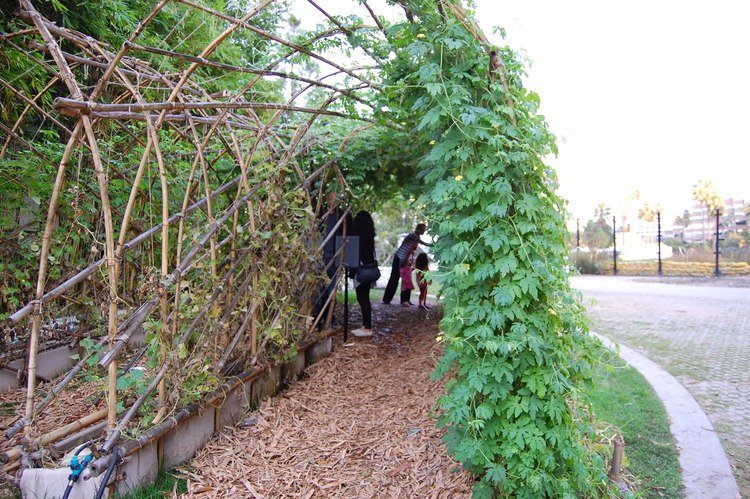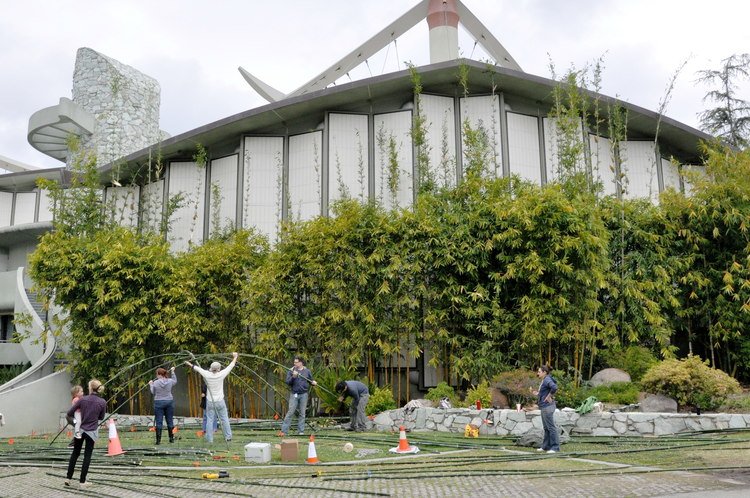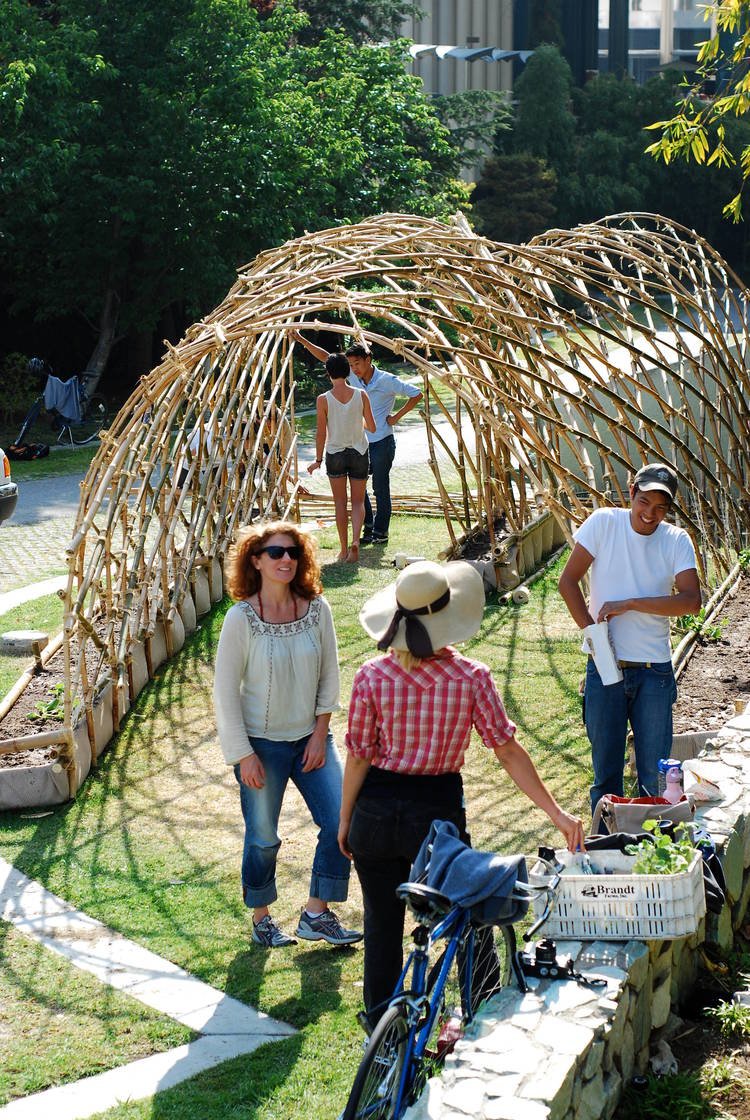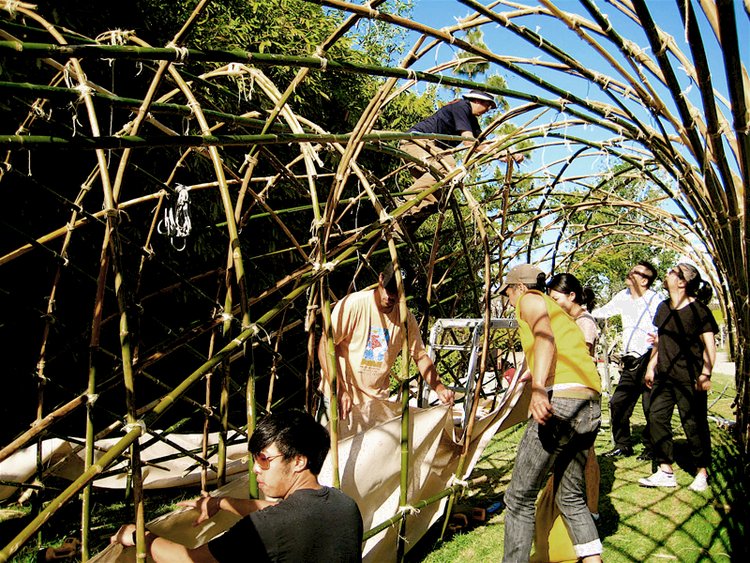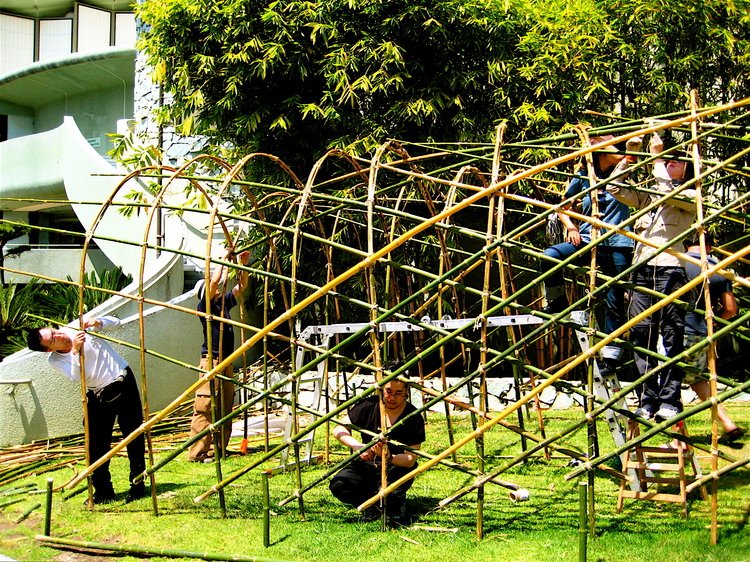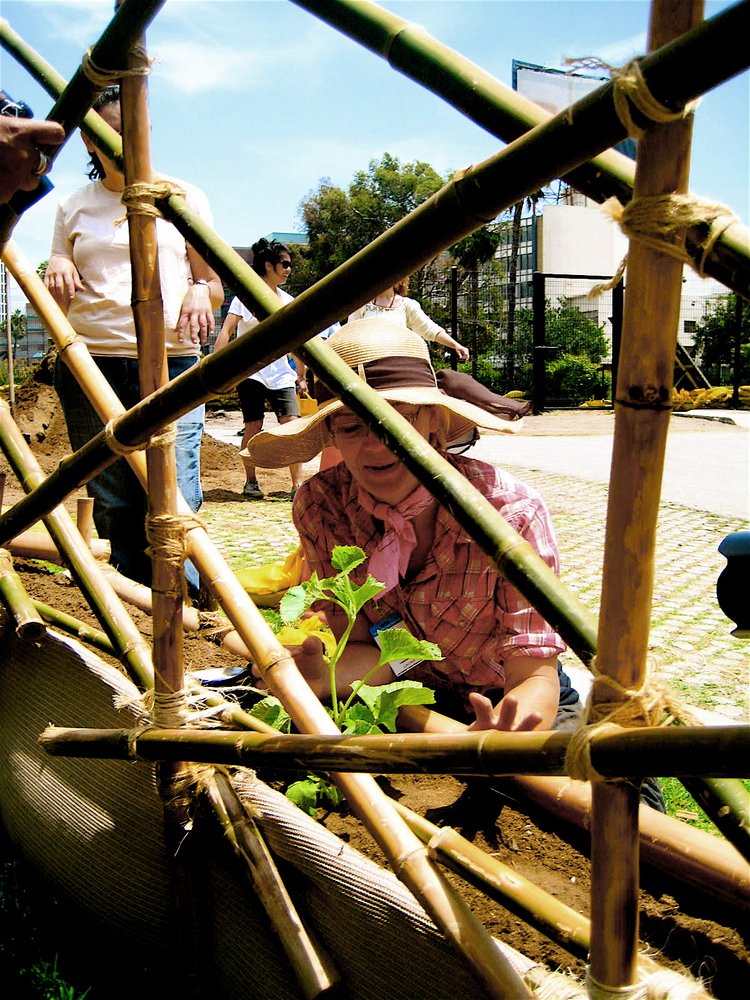Materials & Applications performed its fifth MatterApp workshop, Bitter Melon, constructing a bamboo structure for the National Bitter Melon Council. The piece, titled “Promiscuous Production: Breeding is Bittersweet,” is located at the base of the Japanese Pavilion at LACMA, adjacent to the tar pits, and opens to the public on June 27th, 2010. The structure is visible as the melons grow and fills in over the next several weeks.
The project is part of EATLACMA, a year-long program at the museum designed to explore food as a curatorial theme, drawing works from the permanent collection and from artists in the Los Angeles community.
EATLACMA is curated by Fallen Fruit and Michelle Urton, and will generate gardens on LACMA’s campus in addition to a host of events and workshops.
Exhibition images
Over three weekends, M_A hosted a series of free community workshops to construct a sculptural bamboo trellis for experimenting with melon genetics, attempting to cross-pollinate bitter melons with sweet melons. Artists Jeremy Liu and Hiroko Kikuchi, collectively known as the National Bitter Melon Council, educated community volunteers that melons are considered a “promiscuous fruit.” They hoped the bitter and sweet melons would mingle over the summer, producing a bitter-sweet melon. Brian Janeczko, the lead fabricator at M_A, led the project, given his extensive and creative experience with bamboo as a building material.
For the first weekend, volunteers successfully harvested over 200 poles of bamboo from the LACMA campus, which were then sliced, trimmed, and prepped. As a result of prototyping and experimenting with bamboo and its material properties, it was discovered that the bamboo at the LACMA campus was less likely to bend, and more likely to kink like a drinking straw. As a solution to this issue, Janeczko utilized propane heat torches to steam the bamboo from the inside, allowing the bamboo to arc more easily.
The second weekend marked the beginning of the trellis construction. With sited flags and rebar on the ground, two poles of bamboo stock were carefully heated and molded to an arc, lashed together with jute, and inserted into its corresponding rebar. The resulting vertical components of the trellis frame formed a carefully spaced singular tunnel that forks into two arching tunnels, referencing the genetic experiments of the melon’s themselves.
During the third weekend, volunteers installed and lashed the diagonal bracing to the bamboo arches to provide support for the overall sculpture. Finally, planters were installed on all sides of the trellis so that the melons can begin to grow over the structure.
The garden officially opened to the public on June 27th, 2010, but the trellis structure was visible to the public prior to the opening. In the following months, the melon vines wove themselves onto the bamboo trellis, culminating in a melon harvest festival on November 7th, 2010.
The MatterApp series this spring marks not only M_A’s increasingly experimental methods for social building projects but also our expansion into building projects in different locations. For this project, Brian Janeczko, long-time MatterApp team member and bamboo experimenter, was selected to lead the workshops as we refined our now finely honed techniques for harvesting, prepping and constructing with bamboo. Our original weaving strategy was not compatible with the breed of bamboo that grows at LACMA, but Brian’s extensive knowledge in torch bending bamboo and the wealth of volunteer experience after a M_A bamboo bending workshop earlier this year lead to a strong and smooth construction that was satisfactory to all involved.


